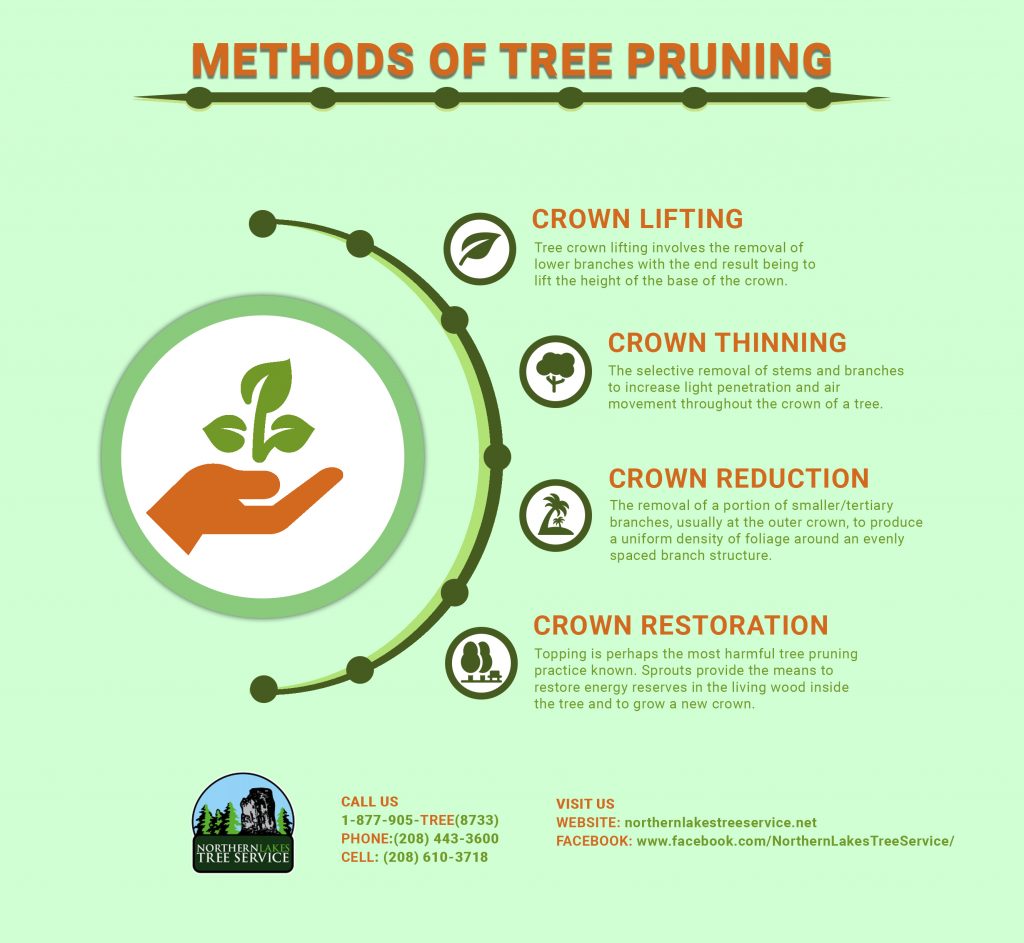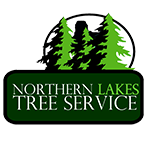Methods of Tree Pruning

Tree pruning is an essential way of caring for the health and growth of plants. It is done with purpose, for it has a big role in determining how a tree grows, observing its growing pattern, and restricting its rapid growth. It also helps protect the structural integrity of the tree, while other forms of pruning improve and maintain the quality of flowers, fruit, and foliage. Pruning ensures safety if you make the tree grow at the appropriate angle and direction to prevent the branches from falling on your property and harming your family members. When pruning the tree, it is important to consider its size, species, and age in order to come up with the correct plan.
1. CROWN LIFTING
Crown lifting is a type of pruning that involves removing the lower branches or limbs in the crown. This is usually done to provide vertical clearance to a specific height to minimize the stress on the tree. Northern Lakes Tree Service has a wide understanding of how much the lower canopy or branches need to be pruned to allow more light to pass beneath the crown. Crown lifting is often done with the crown not lifting more than 1/3 of the overall tree height.
2. CROWN THINNING
Crown thinning is a pruning technique fundamentally used in hardwood trees. It involves the selective removal of stems and branches throughout the crown, with the purpose of increasing light penetration and air circulation throughout the crown of a tree. Consider that if you remove too many branches from the center of the crown, that can negatively affect the tree and make its structure weak and poor. Crown thinning is responsible for opening up the foliage of a tree and helps maintain the tree’s natural shape by reducing weight on its heavy limbs. Usually, crown thinning is done by removing no more than ¼ of the tree’s live foliage.
3. CROWN REDUCTION
Crown reduction is done to clear tree branches. The crown is reduced by cutting it to its suitable and proportional growth point and by shortening its branches. Crown reduction pruning is utilized when the tree has outgrown the space where it stands. The canopy of the tree is reduced to decrease its height and the space it occupies. The branch tips are cut back to lateral branches that can take over as the terminal point of growth. It is done if the side of the branch is at least 1/3 of the diameter of the branch that is likely to be cut. When the branch is removed, the nutrients and water can be sustained back to the lateral branch, which will resume its growth. Due to this, the tree will have fewer sprouts, and its growth will be restricted and preserved.
4. CROWN RESTORATION
This type of pruning is done when there are damages to trees brought by storms or there are cuts and wounds in the tree because it has been vandalized. It involves removing the broken or weak branches back to the lateral branches and ensuring the good condition of the limbs. Northern Lakes Tree Service has a wide professional experience in restoring the health of the trees by cutting back the branches to smaller lateral branches and aiming to regain their natural form and structure with sustainable growth.
